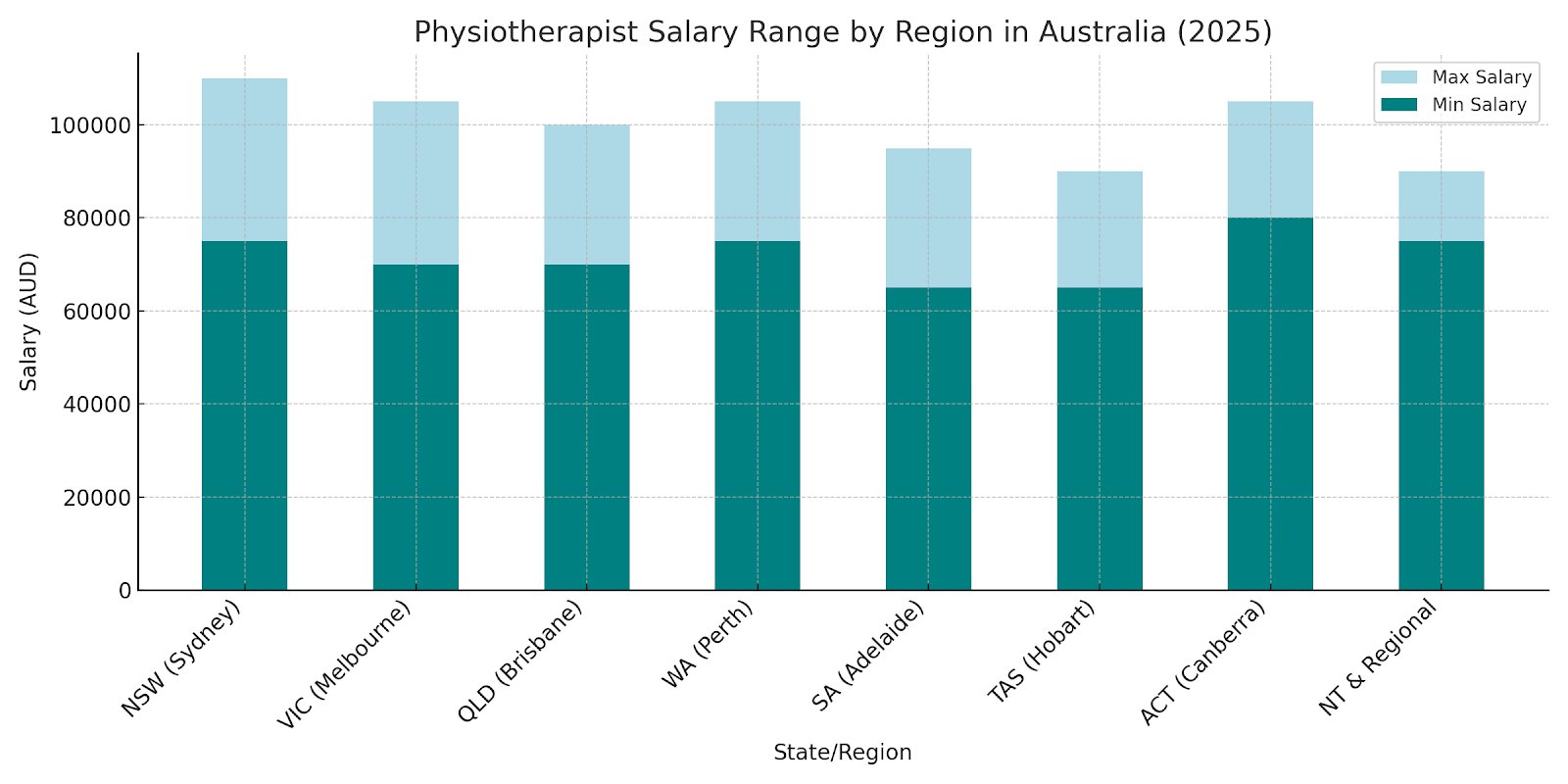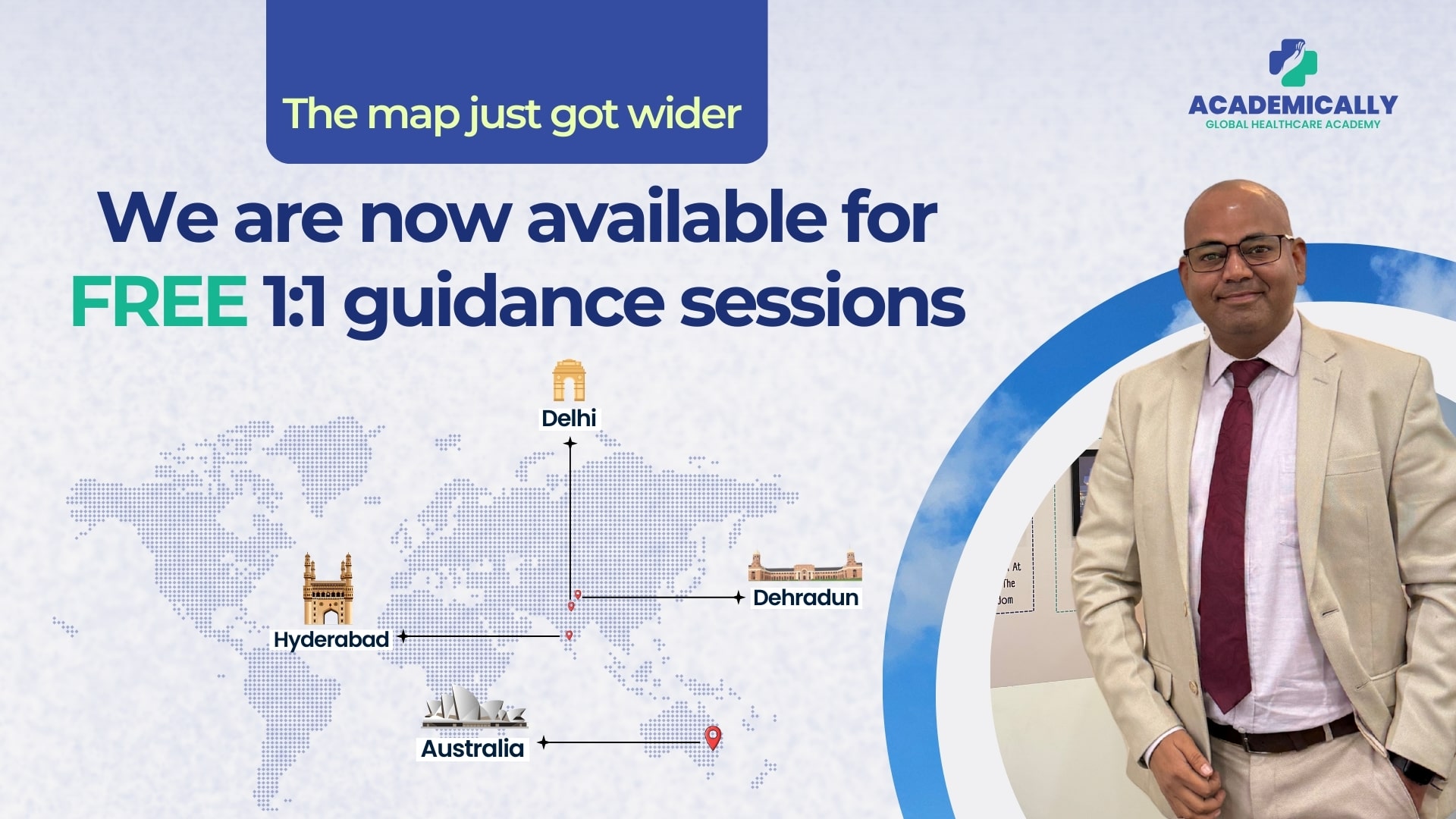Why Physiotherapy in Australia?
High Demand
Australia is facing a shortage of physiotherapists. An aging population and increasing demand for rehabilitation have created a high demand.
High Earning Potential
Physiotherapists’ starting salaries are around AUD 70,000. This can go upward of AUD 100,000 in senior or specialist roles.
Good Work-Life Balance
Australia values flexible work hours. The leave policies are excellent. There are numerous opportunities for professional development.
Career Growth
Options include working in:
- Public hospitals
- Private clinics
- National Disability Insurance Scheme or NDIS contractors
- Sports settings
How to Become a Physiotherapist in Australia?
The steps to register for the exam are simple.
- Apply for the Eligibility Assessment.
- Successfully complete the Cultural Safety Training.
- Register for and take the Written Assessment, APC exam.
- Pass the written exam and get your interim certificate
- Take the clinical assessment.
- Clear the clinical assessment and get the final certificate.
- Register with the Physiotherapy Board of Australia.
Average National Salary (2025)
Physiotherapy is an occupation that requires individual attention to patients. This decides the number of patients treated every day. In individual practice, this influences the salary earned. The fluctuations are less apparent in the public sector. The national average salary for Australian physiotherapists can be divided based on experience and region.
Experience-Based Earnings
| Role Level | Experience Level | Annual Salary (AUD) | Hourly Rate (AUD) |
| Entry-level | 0-2 years | $67,000 – $80,000 AUD (₹37–44 LPA) | $34 – $44 AUD |
| Mid-level | 4–8 years | $80,000 – $95,000 AUD (₹44–52 LPA) | $40 – $50 AUD |
| Senior | 8+ years | $95,000 – $110,000 AUD (₹52–61 LPA) | $48 – $60+ AUD |
| Specialist | Specialized sports physiotherapist | $110,000 – $138,000 AUD (₹61–77 LPA) | Highly flexible |
| Private Practice | Clinic Owners | $200,000 AUD (₹112 LPA) | Highly flexible |
State-Wise Salary Snapshot
Here's a breakdown of physiotherapist salaries across Australian states:
| State/Region | Salary Range (AUD) |
| NSW (Sydney) | 75,000 – 110,000 |
| VIC (Melbourne) | 70,000 – 106,000 |
| QLD (Brisbane) | 70,000 – 100,000 |
| WA (Perth) | 75,000 – 106,000 |
| SA (Adelaide) | 65,000 – 95,000 |
| TAS (Hobart) | 65,000 – 90,000 |
| ACT (Canberra) | 80,000 – 106,000 |
| NT & Regional | 75,000 – 90,000 |

Cities like Melbourne and Sydney have the highest salary ranges for physiotherapists. This is both due to the high cost of living, and the high demand.
Physiotherapist Salary and Job Vacancies in Melbourne
In Melbourne especially, tens of vacancies are created every month. With an average salary of AUD 100,000 (INR 55 lakhs), the city is a dream destination for physiotherapists.

Regional Areas and Salaries
Here is a list of some of the designated rural areas in Australia. Apart from great packages, you also get incentives for working here.
Areas like Tasmania and Northern Territories represent less than 2% of the total physiotherapist population.
| Location | Annual Salary (AUD) | Incentives and Benefits |
| Darwin, Northern Territory | $90,000 – $110,000 AUD (₹50–60.5 LPA) |
|
| Alice Springs, Northern Territory | $95,000 – $130,000 AUD (₹52–71.5 LPA) | |
| Warracknabeal | $70,000 – $100,000 AUD (₹38.5–55 LPA) | |
| Harris River Area | $90,000 AUD (₹50 LPA) |
Public vs Private Sector
- Public Sector: In the public sector, salaries are structured. Fresh graduates can start at AUD 67–80k, and senior roles pay up to AUD 110–128k.
- Private Sector: This sector offers more flexibility and commission. Entry-level salaries are around AUD 70–90k. At mid-level, salaries are AUD 100–110k. For senior physiotherapists, salaries could exceed AUD 130k.
- NDIS: High hourly rates, e.g., AUD 100–200/hour. Top physiotherapists can earn upwards of AUD 140k.
Specialist & Self-Employment Earnings
- Sports/Occupational Health specialists can earn AUD 100–200k.
- Private practice owners/contractors earn AUD 120–250k, depending on caseload & location. They are in the highest-paid role.

Why Salary Varies by State & Role
- Cost of Living: It is much higher in cities like Sydney and Melbourne, hence the higher pay.
- High Demand: Due to the shortage, rural roles pay extras and relocation incentives.
- Sector: In public versus commission-based private clinics, the latter pays more.
- Experience: Structured resumes in public and private reward productivity.
- Specialization: Higher pay for niche skills like sports, NDIS, paediatrics, etc.
Pros & Cons: Public vs Private
| Aspect | Public | Private/NDIS/Locum |
| Wage Growth | Predictable annual steps | Variable; can be high with performance |
| Hours | 9–5, fixed schedule | Flexible, possibly extended hours |
| Overtime/Bonus | Limited | Available via commission or high hourly rates |
| Experience | Diverse clinical exposure and supervision | Hands-on/student autonomy |
| Security | Stable employment with benefits | Less secure but potentially higher income |
| Coursework | Certificate and promotions via internal study | Specialize via externals, no formal system |
Pathway for Indian Physiotherapists
- Degree: Bachelor’s / Master’s in Physio from India or Australia
- AHPRA/APC: Skills assessment & registration
- Visa: Graduate Visa (485) up to 4 years
- Job: Entry in a public hospital or a private clinic
- Growth: 2–5 years to senior/specialist roles
- Optional: Private practice/NDIS contracting
- PR: Skilled Visa once registered
- Further specialization: Neuro, sports, etc.
Why Rural Roles Shine
- Incentives: Rural placements may add AUD 5–15k or an hourly premium
- PR Bonus Points: Working in a designated regional area helps with visa selection.
- Lifestyle: Lower living costs and less competition make rural areas appealing.
Highlights
| High Salaries |
|
| Salaries by Region |
|
| Difference between working sectors |
|
| Specialization |
|
Also Read:
Tips for Success
- Get AHPRA registered and visa-ready early.
- Start public to gain a structured clinical grounding.
- Explore private or NDIS pathways after 2–3 years.
- Consider rural postings for better packages and PR ease.
- Specialize (sports, neuro, paediatrics) to boost earning potential.
- Network through APA and events for growth opportunities
Build Your Australian Dream
Australia offers excellent career and financial prospects for physiotherapists. With smart planning, you can build a fulfilling and financially rewarding life abroad.
- Pass the APC Exam
- Registering with AHPRA
- Start in public healthcare
- Specialize over time, and
- Choose the right location
Start your Australian physiotherapy journey with Academically. With more than a decade of settling medical professionals in countries across the world, we have a solution to all your problems.
How can Academically help you?
- We’ve got the best APC exam preparation course for you.
- Our counselors are here to guide you with the registration process.
- Join our peer groups to find your community.
- Our experts will help you through the Visa application process.
You can connect with us to know the best tips to improve your resume.




